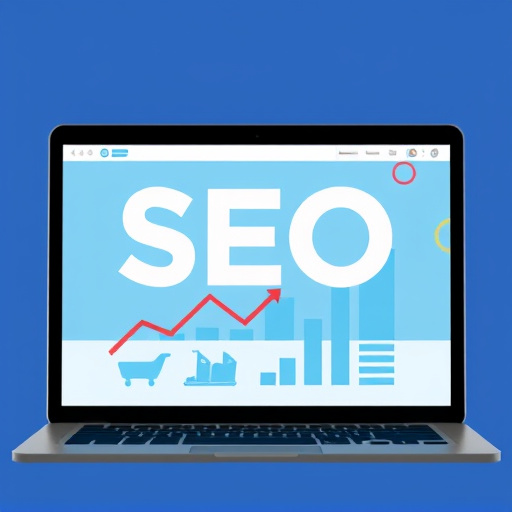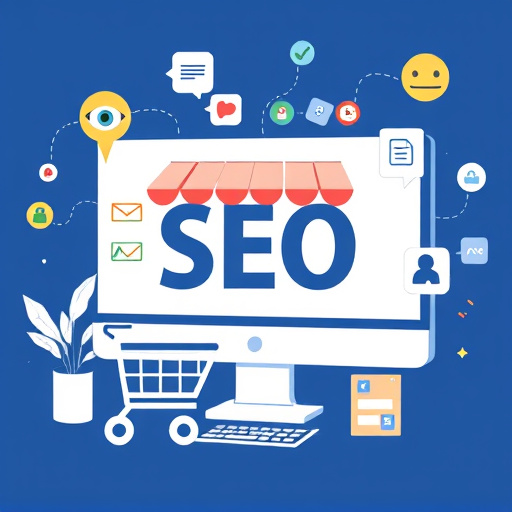On-page SEO strategies for e-commerce sites optimize product pages through meta title/description optimization, keyword-rich titles, enhanced descriptions highlighting benefits, and high-quality multimedia with descriptive file names. These tactics improve rankings, increase visitor engagement, and boost conversion rates by guiding users with structured content, personalized CTAs like "Buy Now," and A/B testing for optimal ROI compared to paid traffic sources.
In the competitive landscape of e-commerce, optimizing product pages is crucial for driving conversion rates. This article explores effective on-page SEO strategies to fix common issues that hinder sales. By analyzing keyword optimization in element-level detail, refining product descriptions and features, and implementing compelling call-to-actions (CTAs), online retailers can significantly enhance their e-commerce site’s performance. Discover how these tactics transform bustling product pages into powerful conversion engines.
- Analyze On-Page Elements for Keyword Optimization
- Optimize Product Descriptions and Features
- Implement Effective Call-to-Actions (CTAs)
Analyze On-Page Elements for Keyword Optimization

When it comes to boosting conversion rates on e-commerce sites, on-page SEO strategies are often overlooked yet immensely powerful tools. A meticulous analysis of on-page elements can significantly enhance visibility and attract the right audience to your product pages. Start by scrutinizing keywords used in meta titles and descriptions—these should accurately reflect search queries your target customers use when looking for products like yours. Ensure each page has a unique, compelling title that includes primary and relevant secondary keywords, which can help in differentiating your e-store from competitors while appealing to both organic and paid traffic sources.
Moreover, optimizing product descriptions goes beyond just listing features; it involves weaving in keywords naturally, explaining benefits, and creating content that resonates with potential buyers. High-quality images are also crucial—use descriptive file names and alt tags that incorporate keywords to improve click-through rates on your e-commerce site. Remember, a well-optimized on-page experience not only boosts search rankings but also encourages visitors to engage more deeply with your products, ultimately increasing the chances of conversions.
Optimize Product Descriptions and Features

To enhance conversion rates on e-commerce sites, it’s crucial to scrutinize and optimize every element on product pages, including descriptions and featured details. On-page SEO strategies for e-commerce sites must go beyond basic keyword integration; they should aim for clarity, persuasion, and engagement. Product descriptions should not only list features but also paint a vivid picture of the benefits for potential buyers. Highlighting unique selling points with compelling language can significantly influence purchasing decisions. Moreover, ensuring product features are easy to navigate and understand, through well-structured categories and detailed yet concise explanations, can reduce confusion and encourage purchases.
Focus on creating content that resonates with your target audience, addressing their pain points and aspirations. Incorporate high-quality visuals and videos to showcase products from various angles, which not only adds realism but also aids in better product comprehension. Remember, an optimized product page is one that not only attracts visitors but also guides them gently towards the desired action—converting browsers into buyers. This involves a delicate balance between information and aesthetics, ensuring every element serves a purpose in the customer’s journey. By refining these aspects, you’re essentially unlocking the full potential of your e-store, including secrets to successful A/B testing on e-commerce sites and the art of writing effective URL structures e-commerce, ultimately driving up sales and improving overall website authority through building backlinks for improved authority e-store.
Implement Effective Call-to-Actions (CTAs)

Implementing effective Call-to-Actions (CTAs) is a powerful on-page SEO strategy for e-commerce sites, guiding visitors towards desired actions and significantly improving conversion rates. CTAs should be clear, concise, and visually compelling, with a strong sense of urgency. Use action-oriented language like “Buy Now,” “Shop Collection,” or “Add to Cart” to prompt immediate responses. Place CTAs strategically on product pages, ensuring they stand out against the surrounding content and visuals.
Best practices for on-page SEO shopping sites involve personalizing CTAs based on user behavior and preferences. For instance, offering a “View Details” CTA to users browsing products versus a “Buy It Now” option to those already engaged can enhance conversion rates. Additionally, A/B testing different CTA variations helps identify which messages and placements resonate best with your audience. Remember, the goal is to create a seamless user experience that encourages organic interactions, aligning with your overall e-commerce strategy of comparing organic vs. paid traffic sources to maximize ROI from your online store anytime you visit us.
By meticulously analyzing on-page elements, optimizing product descriptions and features, and implementing compelling call-to-actions, e-commerce businesses can significantly enhance their conversion rates. These proven on-page SEO strategies ensure that each step of the buyer’s journey is optimized, from keyword targeting to a seamless checkout experience. Remember, a well-tuned product page is a powerful tool in driving sales and fostering customer satisfaction.
